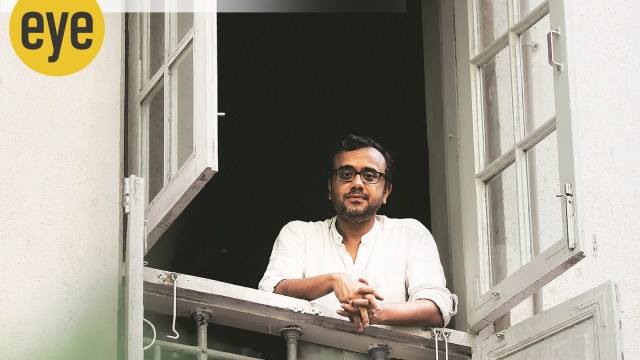After his film Tees’s screening at DIFF, director Dibakar Banerjee on the challenges of indie filmmaking
Tees is about three generations of a Kashmiri family, beginning from the exodus of the Kashmiri Pandits in the early 1990s, all the way to a future dystopia of censorship and tyranny
 Indian film director and screenwriter Dibakar Banerjee. (Express archive photo)
Indian film director and screenwriter Dibakar Banerjee. (Express archive photo)Now that director Dibakar Banerjee has rutba i.e. status, he can walk into a producer’s conference room, shake hands one-by-one, hear compliments about his latest “indie-shindie” flick that made little money but tugged a lot of heartstrings, and still walk out with a shred of dignity if the meeting doesn’t go as planned. But younger filmmakers today have it much harder. “It’s an accident of birth that helped me,” he said at the recent Dharamshala International Film Festival. “You’re going to have to come up with smarter means to (game the system).”
Banerjee bared it all. In a talk that spanned everything from the finances that control the Hindi film industry, to the inevitable creative compromises made by early-career filmmakers, to the dwindling distribution channels that make it harder for experimental films to reach an audience, he discussed how his success was due to talent, yes; hard work, definitely; but also just good timing.
Banerjee was coming up when the Bombay film industry was trying to shake off the bonds of “feudal” control that ruled it in the early 20th century (in the form of Maharashtrian elite like Dadasaheb Phalke) and the mid-20th century (in the form of migrants from Pakistan Punjab like Yash Chopra). In the 1990s, he said, when the economy was opening up, he caught a “headwind”.
“That’s when people like me and Anurag (Kashyap) and Vishal (Bhardwaj) came in from the outside because the cosmopolitan, urban, westernised English-speaking studio executive had been born,” he said. The money came from tax shelters in the United States, investment overflows from new banks, pension funds, trust funds, mutual funds — other boring banking instruments, all of which led to groundbreaking films like Khosla ka Ghosla, Udaan and Dev D.
But there was almost immediately a backlash. Around 2010, he said, “you heard the hawua (craze) of the 100 crore film for the first time. That happened so that the feudal tribe could come back. The essence of this ploy was: this film has done this much business, that is why you should see it… to tell the audience that they must be in a majority, that there’s something embarrassing about watching a film that 20 people are watching and not 100. Therefore, some of us filmmakers started feeling guilty about being minoritarian.”
At the same time, film advertising changed radically. The “film star” became the “national star”, appearing in more ads for companies like Unilever and Procter and Gamble, with “unknown models (coming to act) in new films.” He added, “Their presence started increasing. They were there before, but now there was an explosion. Over the next 10 years, the explosion took the star to a colossal position without even making them act in films. They went through endorsements, buying football clubs, cricket clubs, standing in elections, marrying politicians. Social media fed us that biography is everything, gossip is everything. We went from reading critics to looking at how many crores a film made.”
Add to this the problems of censorship: “If a producer says, you can’t hire two transgender actors — you can hire one and make another act transgender — that’s also censoring… The producer is doing it because he has an uncanny and probably correct approximation of the transphobic, queerphobic, intensely reactionary audience that we cater to date by date… That’s the same as the state telling producers to not (put something in the film) because they want to promote a (certain) vision of India.”
There could have been workarounds with other distribution channels but “theatres have (dug their own graves),” he said, adding, “by making huge and expensive multiplexes, by giving stars fees of Rs 50 to 60 crore, and only showing (expensive) movies which can have (huge) ticket sales… India has the largest number of films being made in the world, but we have the smallest number of theatres.”
He added, “If you are poor, you cannot go to a multiplex. If you are in a small town, a film might come in just for a day. If you’re a family waiting for a children’s film to come, by the time you make your plan, the film goes away… Now, if you want to see an 1980s thriller, there’s no shop in the world where you can go and get a DVD… I can only see what an online platform is showing me. Without piracy, there’s no way to watch some films.”
He added, “These problems are of our own making. If the single-screen theatre survived, if there were five single-screens in Dharamshala, where a Himachali, Hindi, Chinese, Nepali film came for a few days, why won’t people see it? We’ve (lost touch with that era of film-going), where you just went to a gulley somewhere because you wanted to see a movie in the cinema.”
- 01
- 02
- 03
- 04
- 05































